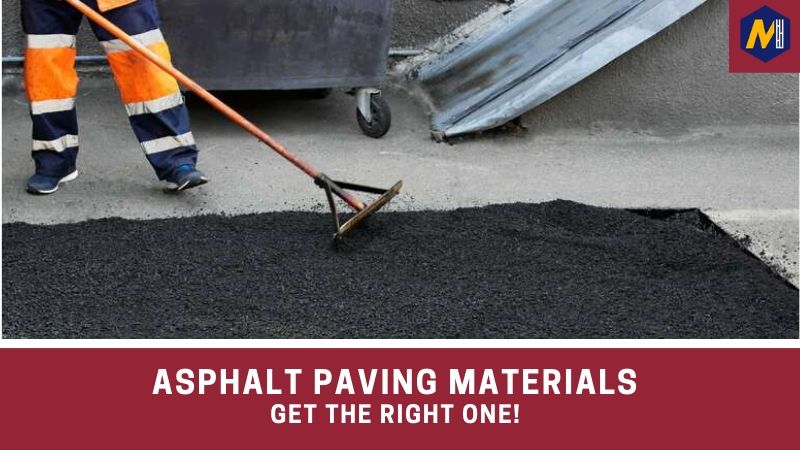Rumored Buzz on A1 Professional Asphalt & Sealing Llc
Rumored Buzz on A1 Professional Asphalt & Sealing Llc
Blog Article
Getting My A1 Professional Asphalt & Sealing Llc To Work
Table of ContentsThe Definitive Guide to A1 Professional Asphalt & Sealing LlcA1 Professional Asphalt & Sealing Llc - An OverviewSome Of A1 Professional Asphalt & Sealing LlcThe 10-Second Trick For A1 Professional Asphalt & Sealing LlcLittle Known Facts About A1 Professional Asphalt & Sealing Llc.

The oil in an automobile engine is not just oil. It includes a variety of additives to improve the automobile's performance. These consist of polymers, viscosity modifiers, warm stabilizers, added lubes, and put on ingredients. The REOB contains all the ingredients that remained in the waste oil in addition to the wear metals from the engine (mainly iron and copper).
However, by making lots of blends using various REOB examples and different asphalt binders, the variants mostly can be averaged out. Several States offered examples of recognized REOB make-up to TFHRC researchers, who examined the examples to contrast the portion of added (known) REOB to the located (examined) quantity. The evaluations revealed a comparable percentage of added and located REOB.
The 10-Second Trick For A1 Professional Asphalt & Sealing Llc
None of those States understood that the asphalt they were getting included REOB. One State insisted its samples had no REOB - https://a1-professional-asphalt--sealing-llc-45929274.hubspotpagebuilder.com/blog/a1-professional-asphalt-repairs-paving-excellence-in-st-louis.
Of the 1,532 samples evaluated, 12 percent included REOB, and some had appreciably high degrees of it at 1020 percent. The highest degree was 34 percent in an example from Texas, which TxDOT had utilized in a patching compound. This screening additionally exposed the presence of phosphoric acid in 11 percent of the examples, and 2 percent contained ground tire rubber.
Two years earlier at TRB's annual conference, the Federal researchers held an REOB workshop and offered the findings of their laboratory evaluations to a standing room-only group. Although some firms do not especially prohibit REOB, they do enforce physical examinations that preclude its useeffectively a restriction. a-1 asphalt. Others do not prohibit it by spec, however have arrangements with asphalt vendors to prevent making use of REOB
The 6-Second Trick For A1 Professional Asphalt & Sealing Llc
A handful do permit REOB, some within particular restrictions. For instance, Ohio and Texas limitation degrees to less than 5 percent of the asphalt. To create a reliable test method that all States can make use of, the TFHRC researchers established a round-robin examination plan. The participants are 11 State highway agencies (Illinois, Massachusetts, Minnesota, Mississippi, Montana, North Carolina, Oklahoma, South Carolina, Texas, Vermont, and Wyoming), 2 independent testing labs, the Ministry of Transport in Ontario, Queen's College in Ontario, and an Ontario paving specialist.
The participants are checking the samples individually utilizing the guidelines offered by the TFHRC scientists. The output will certainly be a proposed AASHTO examination method that any type of State can embrace and use.
The pavement with REOB, which lies 0.6 mile (1 kilometer) from the pavement without REOB, has identical subgrade, traffic density, and environment. Nevertheless, the sector of Highway655 with 5 to 10 percent REOB revealed substantial breaking. In this example, the visibility of REOB was the determined reason of cracking at a low temperatures.
A section of test pavement in Minnesota (MN1-4) located to contain REOB additionally split too soon. The pavement executed well for the very first 3 to 4 years, yet after that began to split.
Some Known Incorrect Statements About A1 Professional Asphalt & Sealing Llc
The tests were not substantial, but they showed that at levels of 6 percent or more, the tensile stamina of the asphalt went down dramatically. At a degree of 3.5 percent REOB, the variation in the physical test techniques was higher than the result of REOB. Actually, it was difficult for researchers to evaluate whether REOB existed.

One binder specification thought about is the distinction in between the reduced temperature crucial specification temperature for stiffness (S) in the bending beam of light rheometer and the bending beam rheometer creep incline (m-value) kept in mind as Tcritical. 2 independent research study teams, one from AASHTO and the other from the Asphalt Institute, concluded that even more research study is needed on the use of REOB in asphalt.
Formerly, all asphalt testing determined engineering residential properties such as rigidity. These tests do disappoint what products had actually been included in the asphalt. One find example obtained throughout the TFHRC research study had a very strange evaluation. The sample had the complying with test outcomes: Superpave PG 64-28 with a heat quality of 67.3 Tcritical on the flexing beam rheometer was 6.7 degrees Celsius.

A1 Professional Asphalt & Sealing Llc for Dummies
These outcomes demonstrate there are weaknesses in the standardized engineering screening procedures that may be exploited. The producer might have a financial benefit and the product passes all the standardized tests, yet the item might not be useful to making sure lasting efficiency. To address this issue and the development of new asphalt ingredients and extenders, TFHRC is starting a research program to use portable spectroscopic gadgets, x-ray fluorescence spectroscopy, and Fourier transform infrared spectroscopy to allow analyses to be carried out in the area instead than having to take examples back to the lab.
Report this page